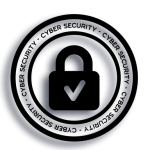Effective cybersecurity demands more than reactive measures; it requires managing security as an ongoing process. Adopting lifecycle management strategies structures cybersecurity into distinct phases—planning, implementation, monitoring, and decommissioning—enabling organizations to anticipate risks, deploy controls efficiently, and adapt to evolving threats. This approach enhances resilience, aligns security with business goals, and ensures continual improvement, ultimately boosting the overall effectiveness of cybersecurity programs.
Understanding Cybersecurity Lifecycle Management
Cybersecurity lifecycle management is a systematic process that governs the entire lifespan of security controls and protocols within an organization. It ensures that cybersecurity measures evolve alongside emerging threats and technological advancements. At its core, this management approach integrates lifecycle management strategies designed to continually protect and adapt IT environments from planning through decommissioning.
Also read : Effortless video creation: explore 300 editable templates
The security management phases consist of four primary stages. First, in the planning phase, organizations assess risks, set goals, and design security policies tailored to their specific needs. During implementation, these policies are put into practice through deploying tools, technologies, and employee training. The monitoring phase involves continuous surveillance and real-time evaluation to detect vulnerabilities or breaches early. Finally, decommissioning safely retires or replaces outdated security measures to prevent gaps.
Adopting a structured cybersecurity lifecycle approach is crucial because it promotes proactive defense rather than reactive fixes. By cycling through these phases deliberately, organizations maintain resilience, comply with regulations, and optimize resource allocation. This ongoing process helps minimize risks linked to outdated or mismanaged security protocols, making it indispensable for any mature cybersecurity program.
Topic to read : How Will Artificial Intelligence Transform UK Computing?
Discover now how integrating robust lifecycle management strategies can significantly boost your organization’s security posture.
Planning Phase: Laying the Foundation for Effective Security
In cybersecurity planning, establishing clear objectives that align with broader business goals is essential. This alignment ensures that security measures support not only technical defenses but also overall operational resilience. Effective cybersecurity planning begins with defining what assets need protection and understanding how these assets contribute to the organization’s mission.
A comprehensive risk assessment is the cornerstone of this phase. It involves identifying potential threats, vulnerabilities, and the impact of different risk scenarios. By conducting thorough risk assessments, organizations can prioritize security investments based on the severity and likelihood of risks, enabling informed decision-making. Risk assessments also facilitate better threat modelling, which simulates attack methods to anticipate and mitigate potential breaches.
Adopting industry-standard security frameworks, such as NIST or ISO/IEC, provides structured guidance and best practices tailored for diverse environments. These frameworks offer a common language and methodology, helping organizations standardize their cybersecurity planning efforts. Compliance with recognized frameworks enhances trust, ensures regulatory alignment, and streamlines the integration of new technologies.
Together, these elements—objective setting, risk assessment, and framework selection—form a robust planning phase that lays the foundation for effective cybersecurity. Prioritizing each step fosters a proactive security posture, reducing vulnerabilities and preparing the organization to respond swiftly to emerging threats. Discover now how this approach can transform your cybersecurity strategy.
Implementation Phase: Executing Security Controls and Strategies
The implementation phase in cybersecurity is crucial for turning planned policies and technologies into active defenses. Deploying effective cybersecurity controls involves installing security solutions designed to protect data, network assets, and systems from potential threats. This process requires meticulous attention to ensure these controls align with the organization’s overall security strategy.
One key aspect is the seamless integration of security solutions within the existing IT infrastructure. Compatibility must be assessed thoroughly to avoid conflicts or system downtime, which can compromise business continuity. Careful planning allows for smooth deployment without disrupting current operations.
Staff training is another vital component. Employees need to understand the roles and responsibilities assigned to them in maintaining security controls. Continuous education programs help ensure everyone is equipped to recognize and respond appropriately to security incidents. Additionally, defining clear policy deployment procedures fosters accountability and reinforces a security-conscious culture throughout the organization.
By effectively executing these steps during the implementation phase, organizations can establish robust protections that serve as the foundation for ongoing cybersecurity management. Discover now how integrating policy deployment with advanced security solutions can elevate your defensive posture.
Monitoring and Optimization: Ensuring Continuous Security
Continuous monitoring is fundamental to maintaining robust cybersecurity. It involves real-time detection of threats, enabling security teams to identify and respond to risks promptly. By constantly analyzing network traffic, system behaviors, and user activities, organizations can spot anomalies before they escalate into serious breaches.
Security metrics play an essential role in this ongoing assessment. These metrics provide quantifiable data regarding system vulnerabilities, attack patterns, and defense effectiveness. For example, tracking the number of detected intrusion attempts or the average time to resolve incidents helps evaluate the strength of current security measures. By leveraging analytics tools, teams can extract actionable insights from these metrics, guiding improvement efforts.
Incident response plans must evolve alongside emerging threats. Refinement of these plans is based on lessons learned from past security events and insights gained through continuous monitoring. A proactive approach ensures that response protocols remain effective against novel attack vectors. This adaptability guarantees organizations can quickly mitigate risks and minimize damage.
In essence, continuous monitoring, informed by precise security metrics and supported by adaptive incident response plans, creates a dynamic defense strategy that strengthens cybersecurity over time. Discover now how integrating product lifecycle management can further elevate your protection strategies.
Decommissioning and Transition: Securely Retiring Systems
Ensuring secure system decommissioning is essential for protecting sensitive information and maintaining operational integrity. When retiring outdated hardware and software, following proper procedures reduces risks of data breaches and compliance violations. Core steps include thorough data sanitization, responsible asset disposal, and meticulous documentation.
Data sanitization goes beyond simple deletion; it involves rendering data irretrievable through techniques such as overwriting, degaussing, or physical destruction. This guarantees that no residual data remains on retired devices, safeguarding against unauthorized recovery. Employing validated sanitization methods aligned with industry standards is crucial for comprehensive protection.
Asset lifecycle management during decommissioning demands updating inventories to track retired systems accurately. Recording system statuses, disposal dates, and sanitization certifications fosters transparency and accountability. This organized approach supports audits, compliance checks, and future transitions, streamlining asset tracking throughout their lifecycle.
By implementing these robust measures in system decommissioning, organizations can confidently retire technology assets while minimizing security vulnerabilities. Discover now how refined asset lifecycle strategies elevate your cybersecurity posture.
Integrating Lifecycle Management into Existing Cybersecurity Programs
Successfully embedding program integration of lifecycle management into current cybersecurity operations requires strategic planning and careful execution. The first step involves assessing existing workflows to identify where lifecycle management best fits without disrupting ongoing security functions. This approach minimizes resistance and facilitates smoother transitions.
Creating and aligning organizational policy is crucial for this integration. Policies must explicitly incorporate lifecycle management principles and tie them to broader cybersecurity objectives. This establishes clear expectations and accountability. Pairing these policies with a robust change management framework supports adaptation by guiding stakeholders through procedural shifts, training, and communication channels.
Challenges such as resistance from staff or misalignment of priorities often arise. Overcoming these relies on driving stakeholder engagement through transparent dialogue and demonstrating the tangible benefits of lifecycle management. Regular feedback loops and inclusion of frontline teams in decision-making further solidify commitment and enhance program success.
Discover now how to elevate your cybersecurity posture by integrating lifecycle management into your organizational policy and change management initiatives.
Measuring Benefits and Enhancing Cybersecurity Outcomes
Understanding security effectiveness is crucial for organisations aiming to maximise their cybersecurity investments. One vital way to evaluate this is through carefully selected key performance indicators (KPIs) that highlight progress in product lifecycle management. Common KPIs include incident response times, vulnerability patch rates, and compliance audit pass rates. Measuring these indicators allows businesses to quantify improvements and align efforts with strategic goals, ensuring a higher return on investment (ROI).
ROI in cybersecurity is not just about cost savings but also about tangible, measurable benefits such as reduced breach incidents and minimized downtime. Organisations that implement robust product lifecycle management report clear risk reduction and enhanced compliance with industry regulations. This fosters trust among stakeholders and shields companies from potential legal penalties.
Real-world case studies illustrate how lifecycle management strategies have markedly improved cybersecurity postures. For instance, businesses integrating continuous monitoring and automated patch management have observed significant decreases in vulnerabilities, directly linking investment with performance outcomes. Such demonstrable success proves that prioritising product lifecycle management translates to stronger defences and operational efficiency.
To fully harness the benefits of product lifecycle management and elevate your cybersecurity, organisations can focus on tailored metrics and adopt methods proven in similar contexts. Discover now how these strategies can redefine your security effectiveness and generate robust ROI.










